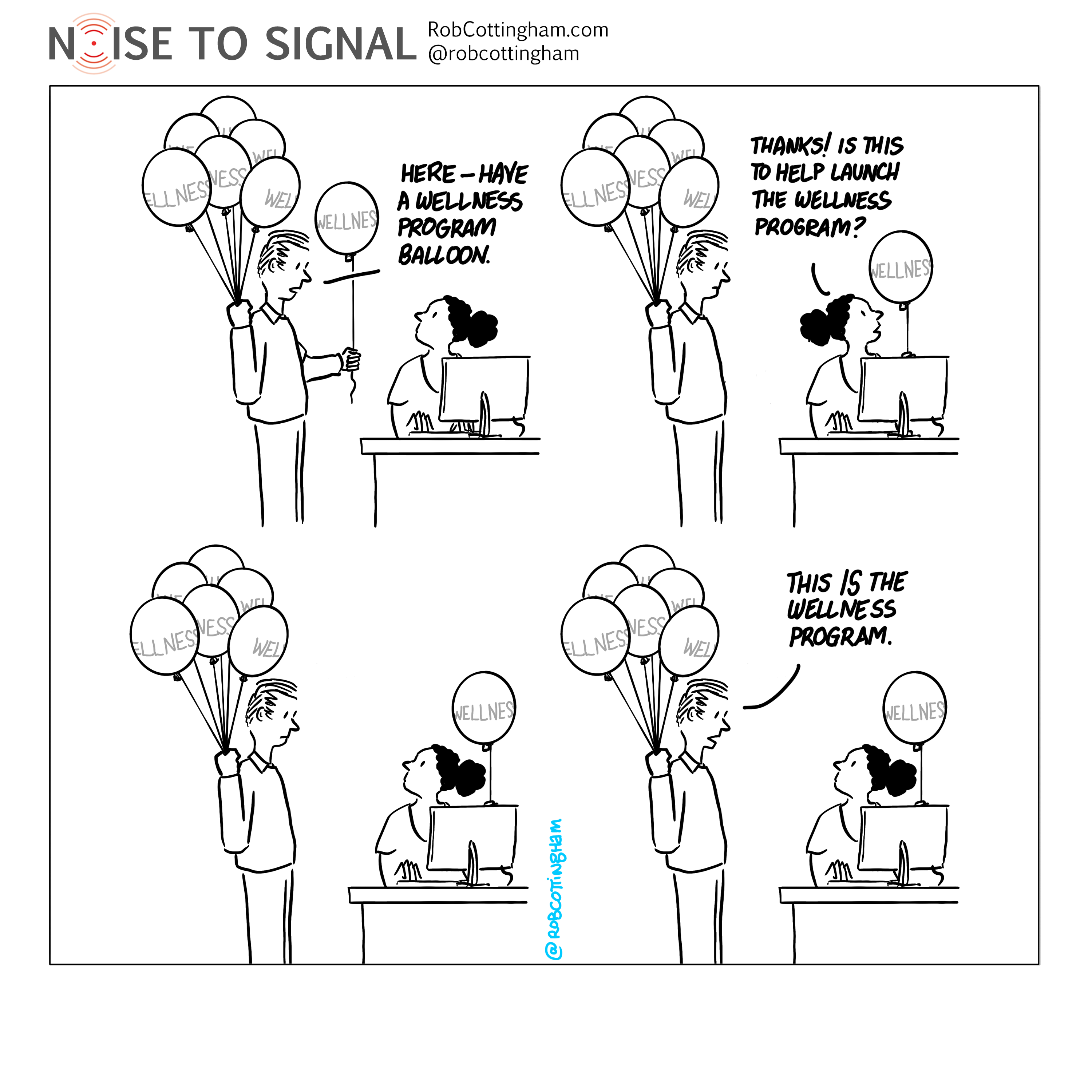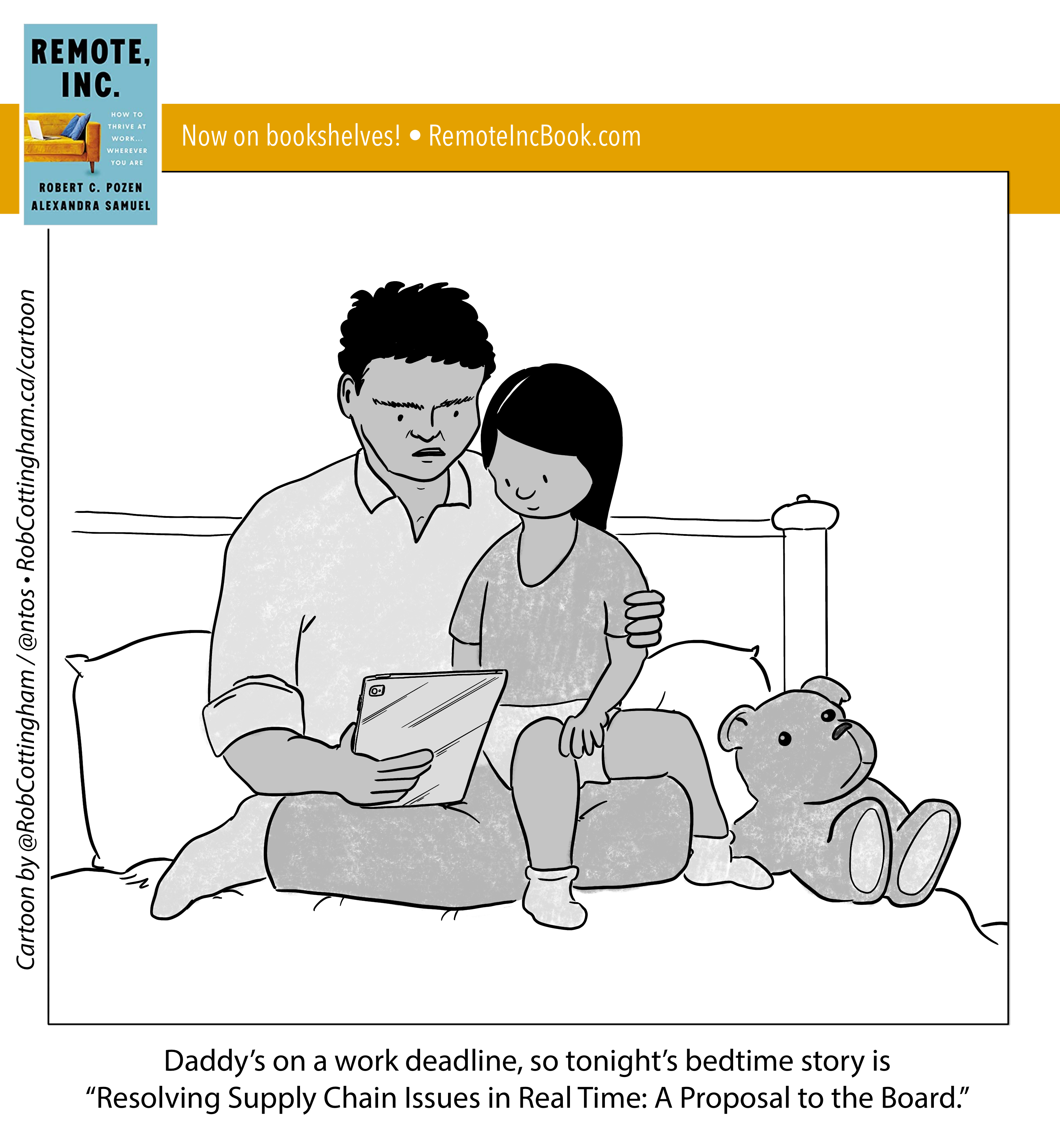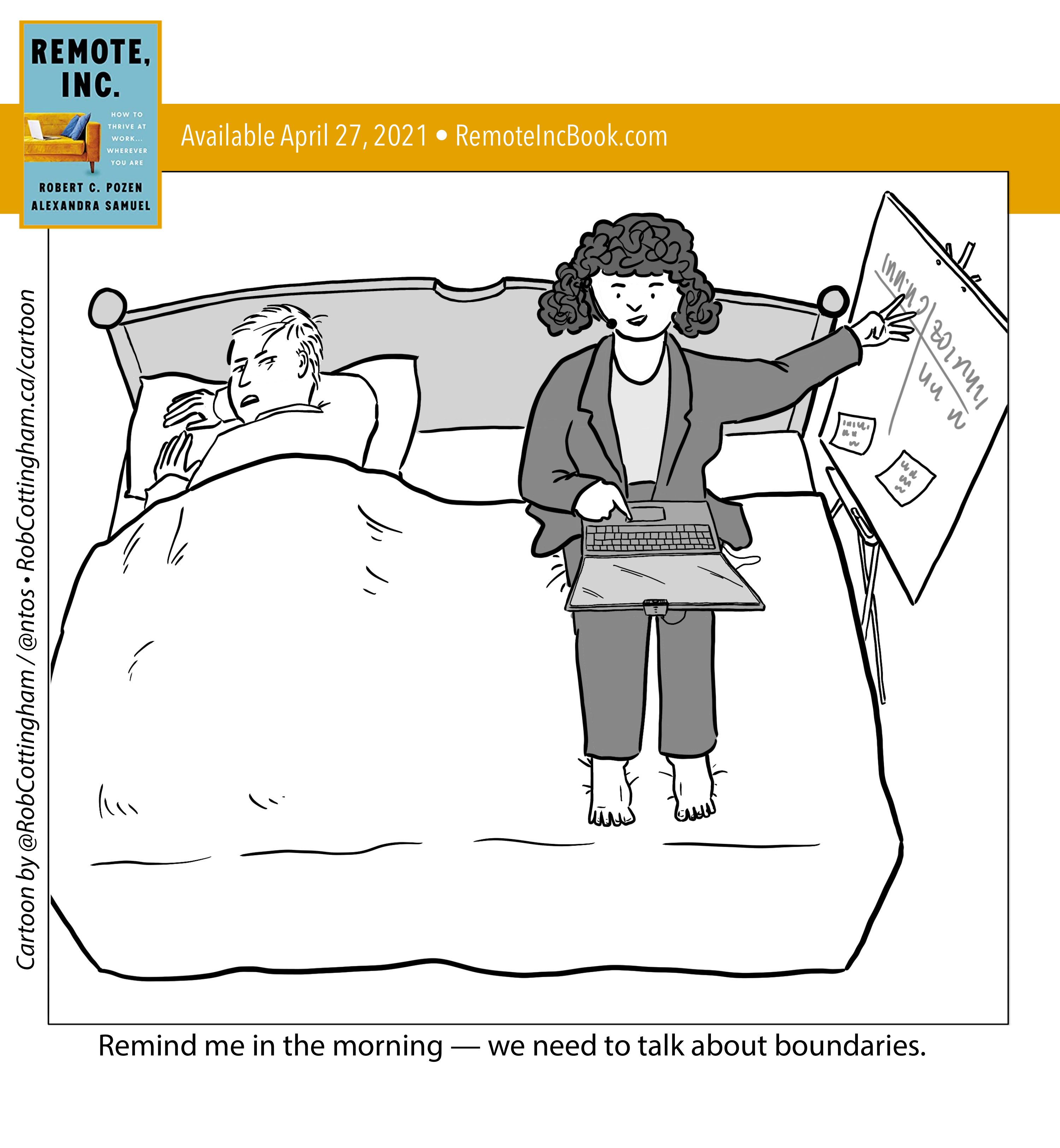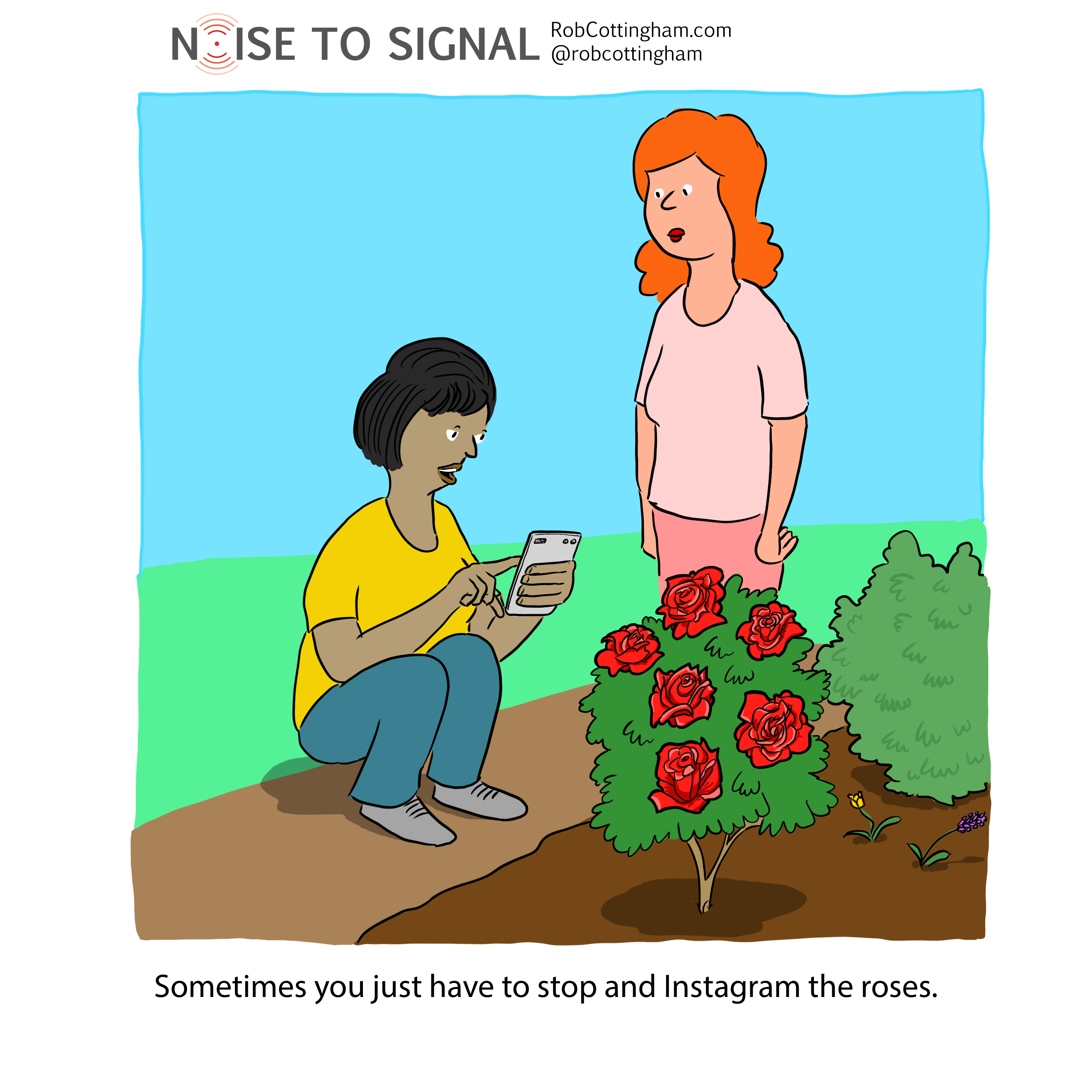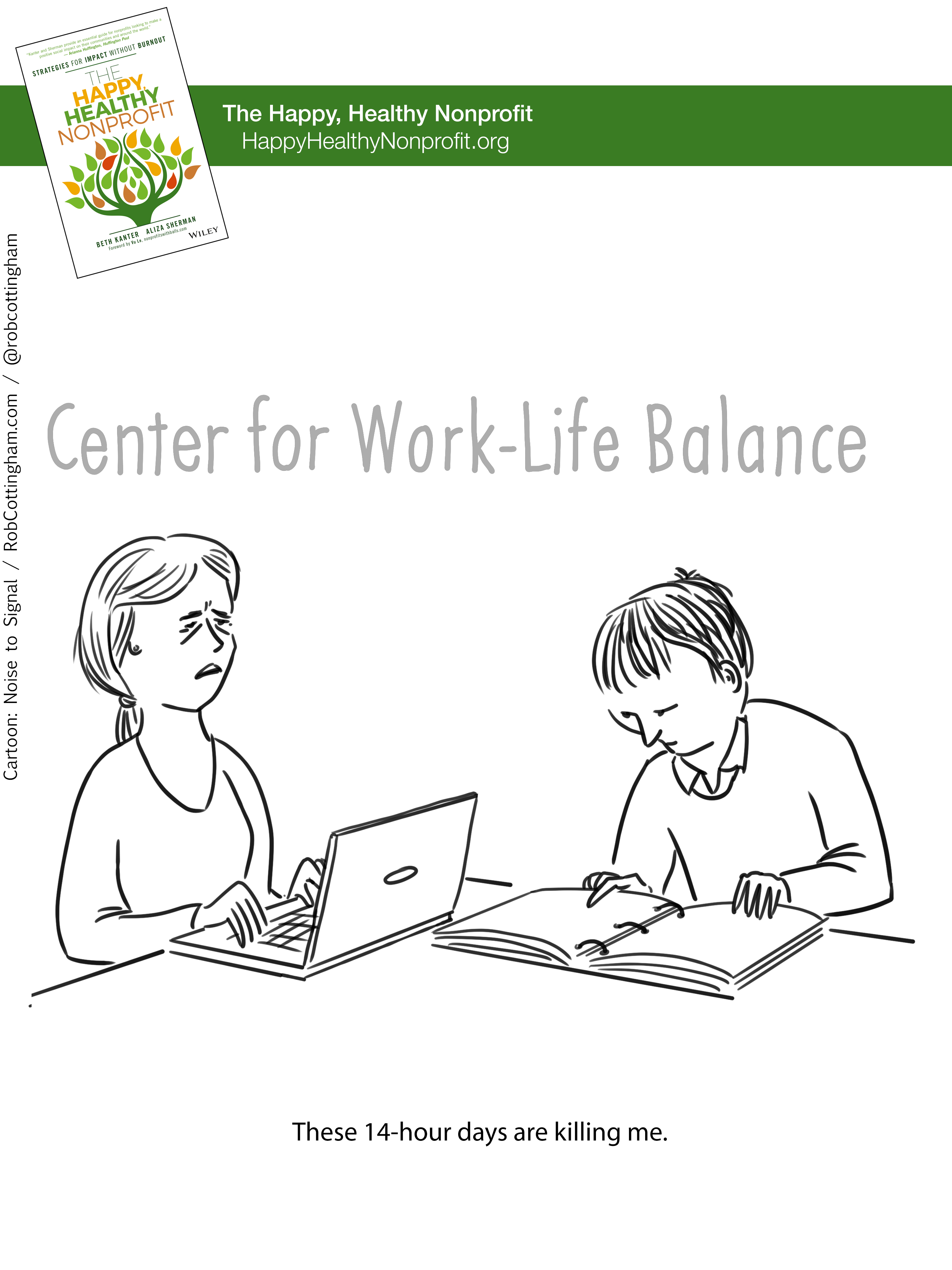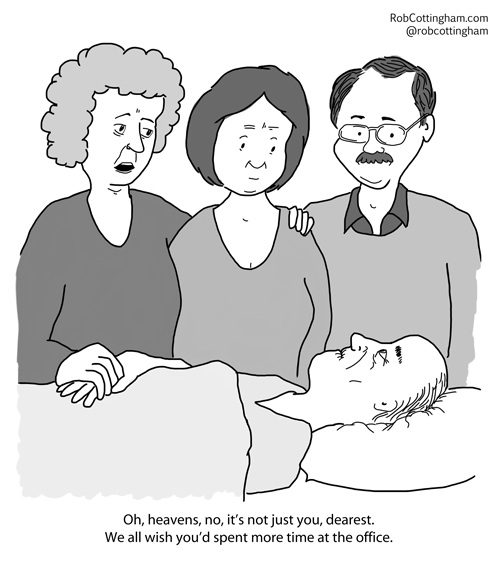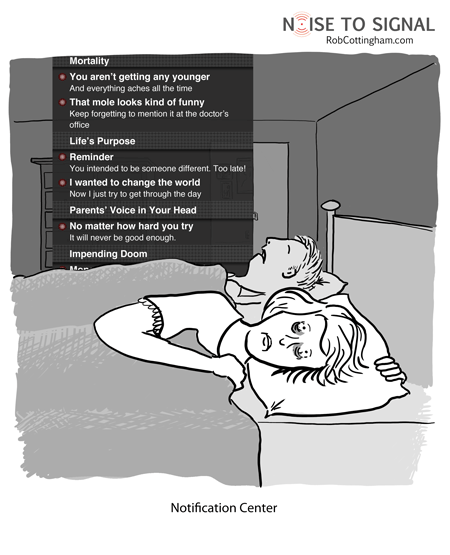Okay, team, gather round. As you know, nothing in this organization is more important than the health and well-being of the people who work here, okay? Which is why management has decided to launch a new Wellness Portal, going live in three weeks. It’s an ambitious deadline, but that only shows how much we care.
Of course, as the development team, we have to build it. And meeting that deadline will mean all hands on deck, so effective immediately, vacations and days off are canceled. Expect to be in here weekends and stat holidays, too. And I’m putting in an order for yoga mats for anyone who wants to start sleeping the night in the office. Hint-hint, that kind of dedication gets noticed upstairs. If you have stuff going on in your life, commitments you’ve made, family issues, what have you, you’re going to have to be flexible — but that’s why they call us an agile team, amirite?
Oh — and think positive, healthy thoughts, and think them hard, because I don’t want to see anyone taking any sick time.
Okay, let’s go show everyone in this organization how much we value wellness and build that portal! To borrow an expression from a sport run by people who’ve long had an alarmingly cavalier attitude toward repeated head trauma and occupational injuries, let’s leave it all on the field!

